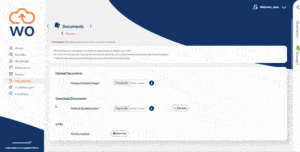The typical onboarding experience for a new starter in 2020 is so poor that it almost seems designed to fail.
The Webonboarding ‘Welcome Aboard’ survey* found that just under half (45%) of new starters in the UK have had negative onboarding experiences. For one-in-ten (11%), this led to them dropping out.
While these figures are shocking, they’re not surprising.
The traditional methods most hiring teams still use to manage the onboarding phase of recruitment seem more effective at putting people off rather than welcoming them in.
In fact, if you wanted to design the worst possible onboarding experience, something with the power to deter even the most enthusiastic of candidates, you would include:
Painfully slow process
The most effective way to lose a successful candidate is to make sure the whole process is grindingly slow. This provides a candidate with plenty of time to reassess their decision and find themselves an alternative job option.
The need to post paperwork and get documents signed means that employee onboarding will typically take weeks to complete. It’s during this time that the majority of dropouts take place.
Keep people in the dark
To ramp up the benefits of a slow process, you need to provide candidates with an absolute minimum level of information. The less you let them know what’s happening, the more anxious and stressful onboarding becomes.
For most starters, the information they receive is likely to be little more than a posted welcome pack with a handful of documents and brochures.
Make simple admin errors
Getting simple things wrong is a great way to prevent a pleasant onboardee experience. Getting their names wrong, providing them with incorrect start dates and sending them misleading info.
These problems are all too common, thanks to the administrative burden that hiring teams often find themselves under as they struggle with a multitude of phone calls, emails and paper documents.
Pile on paperwork
Bombarding a new starter with piles of paper forms to fill and policy documents to plough through is a sure-fire way to turn people off an employer.
With a reliance on paperwork being posted, the bulk of administrative tasks required tend to be left until a person’s first day on the job. It makes a stressful experience even more of an ordeal.
Treat people like numbers
Don’t do anything that could get a new starter feeling excited or enthused about the prospect of starting the role. Make sure onboarding is a purely administrative process that treats them like a faceless number.
This often happens because hiring teams simply don’t have the time to customise or tailor the information that’s shared. With a traditional approach, the more hires are being handled the harder it becomes to provide a bespoke experience.
What’s striking about the features of the worst possible onboarding experience is how common so many of them are. These are the consequences of hiring teams continuing to rely on outdated manual and paper-based ways of working.
Starting a new job should be an exciting time, but so many of these negative experiences are a result of ineffective onboarding processes. The consequence can be serious with recruitment costs spiralling and hiring teams struggling to compete in the employment marketplace. Take a closer look at how not to onboard new hires and turn this into providing the best experience possible. Using a digital solution helps to free up time, which can be better spent on the human side of onboarding.
*Welcome aboard survey by Webonboarding 2019.




